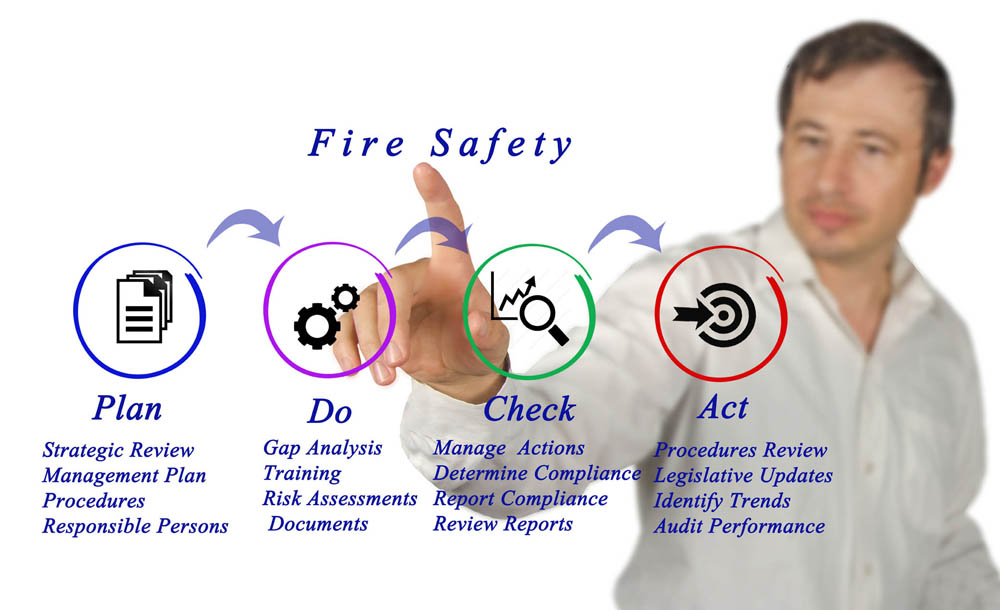The Regulatory Reform (Fire Safety) Act 2005 confers certain liabilities upon employers in non-domestic properties, not the least of which is the requirement to undertake a fire risk assessment of the workplace and take any necessary steps as a result.
However, you also have liabilities if you are not an employer but a landlord of an HMO – House in Multiple Occupation – more commonly known as flats. As an investor / landlord there are more things to consider when it comes to HMOs than in buy to lets. There are more details around fire safety and regulations in order to get the property up to the required standard.
One of the issues with HMOs is that your tenants won’t necessarily get on with each other very well. They may not even talk to each other. Another issue that you don’t usually come across in a buy to let is that rooms in HMOs are regularly locked, and this can result in people having no easy means of escape in the event of a fire breaking out.
When undertaking a fire risk assessment for flats it is necessary to consider a number of different things. An obvious one is the installation of smoke alarms. You need smoke alarms in all of the bedrooms, the corridors, and the communal areas, and you need heat alarms in the kitchens. You need both types of alarms because some fires burn slowly without flames, smouldering, and they can also generate little heat. However, they do cause smoke and poisonous gases such as carbon monoxide and this is usually what harms people in a fire.
Heat detectors obviously detect heat, and they can be linked to trigger things such as sprinklers in addition to setting off an alarm. Ideally, all the smoke and heat detectors should be linked together so that if one goes off, they all do. Depending upon the number of flats in the building, you may need to consider upgrading the fire alarm system to a panel system. The panel receives information and status reports from each detector unit and will indicate its precise position if there is a fire, fault, smoke, heat, or contamination.
You should also install thumb turn locks on all of the doors. This is because in the event of a fire it is simple for the tenants to escape using thumb turn locks whereas if you have a key lock the key may not be to hand easily. Thumb turn locks ensure that the tenants will always have an easy escape route.
Fire doors are, of course, essential. In a typical house, the escape route would be out of the bedroom door, down the stairs, and out of the front or back door. This would avoid the kitchen, which is a high-risk area, so it should be separated using a fire door.
Another thing to consider is fire windows. They need to be the right size for people to escape if this is a secondary escape route.
Fire safety rules are being upgraded, and HMOs are regarded as being higher risk because of the number of tenants. There is a range of requirements, from fire protected escape routes, to alarms, fire doors and windows for primary or secondary escape depending on the property layout. Even if your property doesn’t currently require a licence because of its’ size, it is a good idea to bring it up to the standard that licencing requires both for the safety of your tenants and any future licencing needs that may be brought in. For instance, in October 2019 there was a change in the licencing requirements that brought in a lot of properties that previously did not require one.
If you already own an HMO, or you are thinking of investing in one, at UK-Fire Risk Assessments we can carry out your fire risk assessment for you and provide you with a written report. This will enable you to see what you need to do in order to ensure that your property is up to standard, and we will also be able to make any recommendations that may not actually be a requirement at this moment in time but will ensure that your HMO is safe and will meet with any future likely needs regarding a licence.

